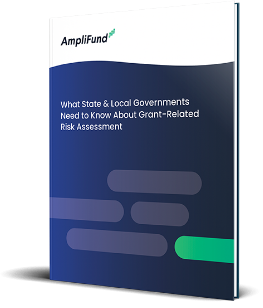Monitoring your organization’s grant recipients is crucial for accurately measuring outcomes and making informed decisions for future funding. However, this requires consistent follow-up and data collection and analysis, which can be resource intensive. What’s more, as you’ve likely experienced, recipients don’t always provide timely and accurate data. This can lead to incomplete or unreliable information on outcomes and impact, which hinders your organization’s ability to assess the effectiveness of funded projects and make data-driven decisions.
While you may not be able to control everything, you can put best practices in place for monitoring grant recipients—and this can have a big impact on the success and sustainability of funded projects.
Let’s look at five best practices you can implement:
1. Define Clear Objectives and Metrics
Before awarding a grant, establish well-defined objectives and measurable outcomes. By setting specific, measurable, achievable, relevant, and time-bound (SMART) goals that are relevant to the award, both funders and recipients get a clear understanding of what the expectations are. Metrics should be quantifiable and directly tied to the project’s purpose, allowing for accurate assessment during monitoring. You can even involve recipients in the grant agreement drafting process, so they have an opportunity to clarify any outstanding questions about project or program objectives.

Download the infographic pdf
2. Ensure Transparent Communication
Transparent communication between funders and recipients is the cornerstone of successful monitoring. This will facilitate early identification of potential issues and opportunity for both parties to adapt as needed. Make sure to outline the way your organization communicates with grantees from the outset and ensure they know who to contact if they need clarification.
3. Establish a Realistic Reporting Process
While you need a performance and financial reporting schedule that aligns with the project timeline and level of complexity, it also needs to be manageable for your recipients. For example, if you require monthly reports from a two-person staff, you may not get accurate, thorough and on-time reports. You can help ease the burden by implementing a process for data gathering and reporting and a simple way for them to deliver to you the information you need. For example, enabling recipients to keep track of their award in your grant management system (GMS) can empower them to see, in real-time, the progress of their award and share updates with you. If you do not yet have a GMS, it is important to find other ways to streamline and standardize the process for gathering and sharing data with you to both ease the burden on the recipients and improve your odds of getting accurate, timely reports.
4. Perform Site Visits and Field Evaluations
In-person site visits and field evaluations offer invaluable insights into the on-the-ground realities of a project. Observing the implementation process, interacting with the people carrying out the work you are funding, and assessing the effectiveness of resource allocation allows grantors to gauge the project’s impact more accurately. By scheduling your visit in advance, you provide your recipient with another milestone date, which encourages them to keep the program you funded as a priority despite competing needs and helps them stay focused on program implementation as well as performance so that they can present this to you in person during your visit.
5. Monitor Risk
Identifying and managing risks proactively is essential to prevent setbacks. Funders should have a comprehensive risk management plan in place. Encourage grant recipients to develop their own risk mitigation plans, or to adopt yours, and then provide them support when unforeseen obstacles arise. Assess risk for your own organization with our Grant-Related Risk Assessment Guide that provides recommendations and resources for enhancing your organization’s risk assessment procedures—including a pre-award risk assessment template and a subrecipient monitoring risk assessment tool to use as a starting point.
Bonus: Share Best Practices
Grant monitoring is not just about keeping a specific program on track. It is also about learning and fostering continuous improvement. Encourage grant recipients to share their experiences, successes, and challenges with other stakeholders in the sector. This knowledge exchange encourages the adoption of best practices across the field and ultimately leads to more impactful projects in the future.
Effective recipient monitoring is key to unlocking successful, sustainable projects and programs. By establishing clear objectives, fostering transparent communication, setting up realistic reporting processes, stepping into the field when possible, and actively monitoring risk, grant funders can set recipients up for success. Each step you put into place aligned with these best practices empowers you and your recipients to maximize the impact of the funds and the programs they support.
Monitoring subrecipients is much more manageable when using a grant management system. To discover how AmpiFund can support you in this process, schedule time with a solutions expert.
*Photo by AndreyPopov from Canva.






